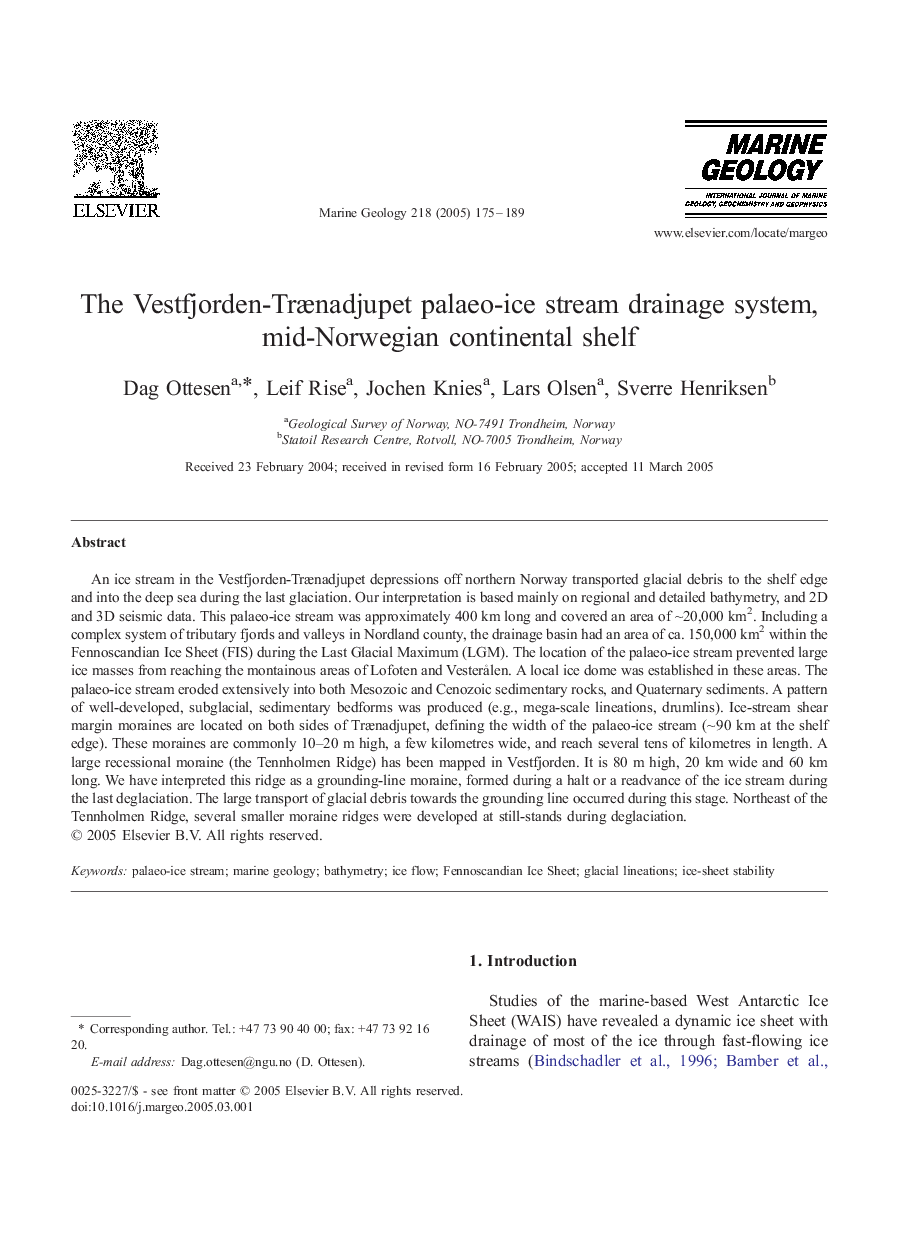| Article ID | Journal | Published Year | Pages | File Type |
|---|---|---|---|---|
| 9532644 | Marine Geology | 2005 | 15 Pages |
Abstract
An ice stream in the Vestfjorden-Trænadjupet depressions off northern Norway transported glacial debris to the shelf edge and into the deep sea during the last glaciation. Our interpretation is based mainly on regional and detailed bathymetry, and 2D and 3D seismic data. This palaeo-ice stream was approximately 400 km long and covered an area of â¼20,000 km2. Including a complex system of tributary fjords and valleys in Nordland county, the drainage basin had an area of ca. 150,000 km2 within the Fennoscandian Ice Sheet (FIS) during the Last Glacial Maximum (LGM). The location of the palaeo-ice stream prevented large ice masses from reaching the montainous areas of Lofoten and VesterÃ¥len. A local ice dome was established in these areas. The palaeo-ice stream eroded extensively into both Mesozoic and Cenozoic sedimentary rocks, and Quaternary sediments. A pattern of well-developed, subglacial, sedimentary bedforms was produced (e.g., mega-scale lineations, drumlins). Ice-stream shear margin moraines are located on both sides of Trænadjupet, defining the width of the palaeo-ice stream (â¼Â 90 km at the shelf edge). These moraines are commonly 10-20 m high, a few kilometres wide, and reach several tens of kilometres in length. A large recessional moraine (the Tennholmen Ridge) has been mapped in Vestfjorden. It is 80 m high, 20 km wide and 60 km long. We have interpreted this ridge as a grounding-line moraine, formed during a halt or a readvance of the ice stream during the last deglaciation. The large transport of glacial debris towards the grounding line occurred during this stage. Northeast of the Tennholmen Ridge, several smaller moraine ridges were developed at still-stands during deglaciation.
Related Topics
Physical Sciences and Engineering
Earth and Planetary Sciences
Geochemistry and Petrology
Authors
Dag Ottesen, Leif Rise, Jochen Knies, Lars Olsen, Sverre Henriksen,
